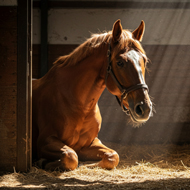The research examines the threat to human health.
A review into the transmission of the H5N1 avian influenza virus has suggested that current control measures are ‘not working’.
This has raised concerns that significant data gaps may disguise a silent spread of bird flu, which may eventually lead to an outbreak among humans.
Researchers say that influenza A viruses, like H5N1, have resulted in the most recorded global pandemics in human history, compared to other pathogens. Swine have usually been considered the ‘intermediary’, where avian influenza adapts to mammals before infecting humans.
However, recent changes in the ecology and molecular evolution of H5N1 in both wild and domestic birds may imply more pathways for the panzootic influenza to spread to mammals.
When two or more viruses infect a host, they can swap segments during the genome replication process. This can lead to novel hybrids such as H5N1 – believed to have developed in Europe or Central Asia during 2020.
Continued ‘genomic reassortments’ are believed to be driving the global panzootic outbreak.
Scientists say that there are significant gaps in the data and control mechanisms used to manage H5N1 influenza. They analysed outbreaks in United States dairy cattle, European fur farms and South American marine animals to consider the threat the virus may pose to humans.
There is particular concern about a reluctance to use modern vaccine and surveillance strategies, as well as a lack of data collection on transmission between cows and humans on dairy farms.
Previously, outbreaks such as foot-and-mouth disease have been managed through the sharing of epidemiological data. The researchers say there is now months of missing data about H5N1 transmission in dairy farms, leaving researchers, veterinary teams and policy makers uninformed.
In the United States, H5N1 is only a reportable disease among poultry, and not mammals. H5N1 testing is only required in lactating cattle before they are moved across states. Meanwhile testing for H5N1 in wildlife is generally focused on carcasses, and is not monitored in living animals.
Scientists believe that various evolutionary pathways will increase the chances of the H5N1 panzootic turning into a human pandemic virus.
Thomas Peacock, a zoonotic influenza specialist who led the study, said: “What keeps scientists up at night is the possibility of unseen chains of transmission silently spreading through farm worker barracks, swine barns, or developing countries, evolving under the radar because testing criteria are narrow, government authorities are feared, or resources are thin.”
Currently the severity of a future H5N1 pandemic is unclear. Current human infections are seeing a lower fatality rate than during the prior outbreak in Asia, where half of people with reported infections died.
The study can be found in the journal Nature.
Image © Shutterstock



 Zoetis UK has called on horse owners to complete a short online survey about their horse's behaviours.
Zoetis UK has called on horse owners to complete a short online survey about their horse's behaviours.